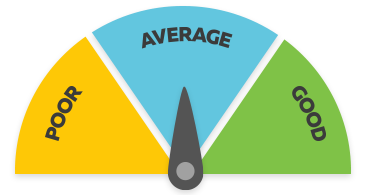Jeweller
Kaihanga Taonga Rei
Alternative titles for this job
Jewellers design, make, alter and repair items such as rings, bracelets, necklaces and earrings.
Pay
Manufacturing jewellers with up to five years' experience usually earn
$49K-$60K per year
Manufacturing jewellers with more than five years' experience usually earn
$60K–$100K per year
Source: Jewellery Industry Registration Board of New Zealand, 2020.
Job opportunities
Pay
Pay for jewellers varies depending on skills, experience and location, and whether they are working as a manufacturing or contemporary jeweller.
- Manufacturing jewellery apprentices usually start on the minimum wage.
- Fully qualified manufacturing jewellers can earn up to $60,000 a year.
- Experienced manufacturing jewellers with five or more years' experience, or who run their own businesses, can earn up to $100,000.
Pay for contemporary jewellers varies widely and depends on their success and ability to market themselves.
Source: Jewellery Industry Registration Board of New Zealand, 2020.
- PAYE.net.nz website – use this calculator to convert pay and salary information
- Employment New Zealand website - information about minimum wage rates
(This information is a guide only. Find out more about the sources of our pay information)
What you will do
Jewellers may do some or all of the following:
- design jewellery freehand or using computer-aided design (CAD) tools
- select metals and gems
- melt, roll out, cut, bend, shape, solder and cast metal
- set gems into pieces of jewellery
- file, polish and clean jewellery
- estimate the value of jewellery and gemstones
- sell jewellery in a shop.
Skills and knowledge
Jewellers need to have knowledge of:
- jewellery styles and designs
- metals and alloys
- gemstones and their value
- different methods of cutting and setting gemstones.
Jewellers who create their own jewellery need design skills, and small business skills if they run their own business.
Working conditions
Jewellers:
- usually work regular business hours, but may work weekends if they work in retail
- work in small workrooms, private studios and shops.
What's the job really like?

Thomas Luoni
Jeweller
Focus on becoming a skilled craftsperson
As an apprentice jeweller, Thomas Luoni spends a lot of time sizing rings for customers. But every job is an opportunity to improve his skills.
“I’m constantly looking to better myself. The challenge in jewellery is the extent to which you do it well because it’s the finish that makes all the difference.”
Technical skills are a big part of the job
Thomas says people often think jewellery is all about being creative. “It’s actually quite technical – you have to be able to measure and plan things ahead because making a mistake can mean starting over again.
“It also helps to be a bit of a ‘pyro’,” he jokes. “I love heating up the blowtorch then melting down and rolling gold out to shape, and making the metal joins.”
Finding out what’s expected
On return from his OE, Thomas had his mind set on a career in jewellery. “I’d always enjoyed chemistry – especially of metals – and making things with my hands, so the one-off, small-scale side of jewellery appealed.
“I did a reality check – spoke to a jeweller and completed the first stage of the theory course work – so I knew what to expect from an apprenticeship.”
Moving from Southland to train with a lower North Island jeweller wasn’t a problem for Thomas. “You don't get to pick where you go, but where I did my apprenticeship wasn't important. I just want to develop my skills so eventually I'll have my own workshop."
Entry requirements
To become a qualified manufacturing jeweller you need to complete an apprenticeship and gain a New Zealand Certificate in Manufacturing Jewellery (Level 4). The Jewellery Industry Registration Board of New Zealand oversees manufacturing jeweller apprenticeships.
Some people also work as contemporary jewellers, which does not require industry-certified training.
- Jewellery Industry Registration Board of New Zealand website – information about manufacturing jeweller apprenticeships
- More information about apprenticeships
Secondary education
No specific secondary education is required for this job, but maths, design and visual communication (graphics), painting, sculpture, photography and printmaking to at least NCEA Level 1 are useful.
Personal requirements
Jewellers need to be:
- creative
- patient and accurate, with an eye for detail
- able to solve problems
- practical, with good technical skills
- able to work well with people.
You have to be the type of person able to get along with people because you’re spending eight to nine hours a day working in a cubicle with a small team of people.

Thomas Luoni
Jeweller
Useful experience
Useful experience for jewellers includes:
- work in the arts
- sales
- draughting and design experience (including computer-aided design)
- work as a jeweller's assistant
- metalwork.
Physical requirements
Jewellers need to have good eyesight (with or without corrective lenses) as they have to be precise when working with small parts.
Registration
Manufacturing jewellers need to be registered with the Jewellery Industry Registration Board of New Zealand.
Find out more about training
- Jewellery Industry Registration Board of New Zealand
- info@jirbnz.org.nz - www.jirbnz.org.nz
What are the chances of getting a job?
Few opportunities for jewellers
The industry is small so opportunities are generally low, but qualified and experienced manufacturing jewellers have better chances because demand for jewellery cleaning, alteration, repair and design services is steady.
According to the Census, 819 jewellers and 129 jewellery designers worked in New Zealand in 2018.
A manufacturing jewellery apprenticeship increases your chances
Your chances of getting a job are best if you train as a manufacturing jeweller. Ten new apprentices are taken on each year in manufacturing jewellery stores around the country and there is strong competition for these positions.
Contemporary jewellers depend on their marketing skills
Opportunities for contemporary jewellers, who are usually self-employed, depend on how they market and sell their work. It can be competitive and they may need to combine jewellery-making with another job.
Types of employers varied
Manufacturing jewellers usually work at manufacturing workshops or workshops at retail jewellery stores.
Contemporary jewellers usually work for themselves in small private studios, and exhibit and sell through galleries. They may also teach jewellery making techniques.
Sources
- Harrison, G, chairman, Jewellery Industry Registration Board of New Zealand, careers.govt.nz interview, June 2020.
- Ministry of Business, Innovation and Employment, 'Occupational Outlook 2020 - Jewellers', accessed June 2020, (www.mbie.govt.nz).
- Radio New Zealand, 'Government unveils $390m subsidy for employers training apprentices', 17 June 2020, (rnz.co.nz).
- Stats NZ, '2018 Census Data', 2019.
(This information is a guide only. Find out more about the sources of our job opportunities information)
Progression and specialisations
Jewellers may progress to owning a business and employing staff. They usually specialise in one of the following areas:
- Contemporary Jeweller
- Contemporary jewellers generally haven't completed a formal apprenticeship, and work part time making one-off commissions or limited-edition pieces. They often exhibit and sell their work in places like art galleries.
- Manufacturing Jeweller
- Manufacturing jewellers generally work in private manufacturing workshops or workshops at retail stores, where they produce lines of jewellery or one-offs for sale. They are trade-certified and must complete a formal apprenticeship.
Last updated 28 March 2025


